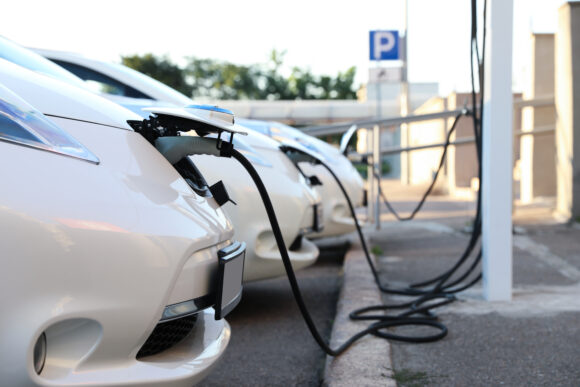Vehicle pricing was a major concern during the inflationary environment that dominated headlines in 2022, however a new report shows sales of electric vehicles in California rose by more than 50% last year from 2021 with an estimated increase in market share of 17.1%.
That’s good for EV makers and dealers, and it looks good for the environment, but insurers doing business in California may be eyeing the bottom-line implications.
One major insurer in California reports EVs are more costly to repair, while the carrier’s share of customers with EVs has increased over time.
The California New Car Dealers Association recently released its fourth quarter 2022 California Auto Outlook report, which outlines 2022 vehicle registration data and estimates projected 2023 sales in California’s auto market.
The figures showed car sales in California continued to be impacted by inflation last year.
However, the pace of sales appears to be slowly returning to pre-pandemic levels, which the state’s auto insurers see as an indication the state’s insurance regulator needs to approve more rate filings. According to the California Department of Insurance, seven total rate filings were approved in 2022, six approvals were made in 2023, and there are currently 75 rate filings under review.
Insurers may also add to their argument for rate filings the rising cost of EV repairs. To be fair, auto repair costs skyrocketed along with the prices of nearly all goods and services.
“EV repair costs will not be immune from all the inflationary trends that are also impacting internal combustion engine vehicles,” said Robert Passmore, department vice president, personal lines & international, for the American Property Casualty Insurers Association. “Another challenge is the relative scarcity of qualified repair facilities and parts. Given there are relatively few EVs, there aren’t aftermarket options for replacement parts, which is also driving up costs.”
The most recent data on EV claim frequency and severity from 2020 shows the frequency of crashes tend to be lower because of the advanced driver-assistance features included in most of these new vehicles.
However, the figures show collision severity is higher.
A report out from Verisk last year shows the cost of insuring electric vehicles tends to be higher than gas-powered vehicles. Drivers of the higher costs include a scarcity of repair shops equipped to fix EVs, as Passmore noted. Another source is the high costs of repairing and replacing the sensors and batteries that come with most of these vehicles.
Mercury Insurance, a large California auto insurer, reports EV repair costs can be nearly 20% higher than the average vehicle repair cost on first-party coverages, such as collision.
“EVs are full of technologies that go beyond simple auto maintenance and repair,” said Justin Yoshizawa, Mercury’s director of product management. “So many of these features – like self-driving, safety, entertainment and comfort tech – are unfamiliar ground to many technicians and, even with familiarity, more time is required to evaluate and address potential issues with such features. It makes EVs costly to repair. And that’s not even taking into account the ongoing constraints of supply chain issues and labor.”
The number of Mercury’s California customers who own EVs has increased over time. The carrier reports the number is currently around 3% of its total number of insureds in the state.
Interest in EVs and hybrid vehicles in California may only grow more as vehicle sales continue to slowly rebound from the downturn.
All new vehicle sales in California last year dipped 10%, while nationwide sales dropped 7.9%. Yet the hybrid market share continues to steadily grow, the report from the California New Car Dealers Association shows. The California hybrid/EV market share was 31.1 % last year, according to the association.
“With (zero-emissions vehicle) product announcements every day, we’re seeing the latest and greatest in technology and innovation in new car makes and models by the major automakers,” Tony Toohey, the association’s chairman, said in a statement. “As dealers, we are eagerly waiting to receive these cars and get them into the hands of our longstanding customers. California drivers want these cars now.”
Related:
- NTSB Chair Raises Safety Concerns About Heavy Electric Vehicles
- California Approves Roadmap for Carbon Neutrality by 2045
- What to Know About Electric Vehicle Safety
Topics California Trends Carriers Personal Auto
Was this article valuable?
Here are more articles you may enjoy.



 US Judge Skeptical of Biden Overtime Pay Rule
US Judge Skeptical of Biden Overtime Pay Rule  Farmers Adjusters Cry Foul Over Workloads, Claims Handling in Letter to Regulators
Farmers Adjusters Cry Foul Over Workloads, Claims Handling in Letter to Regulators  US P/C Insurers Post Best Q1 Underwriting Result In 17 Years
US P/C Insurers Post Best Q1 Underwriting Result In 17 Years  A $29 Billion Weed Market Fights to Diversify Amid Legal Hurdles
A $29 Billion Weed Market Fights to Diversify Amid Legal Hurdles 

